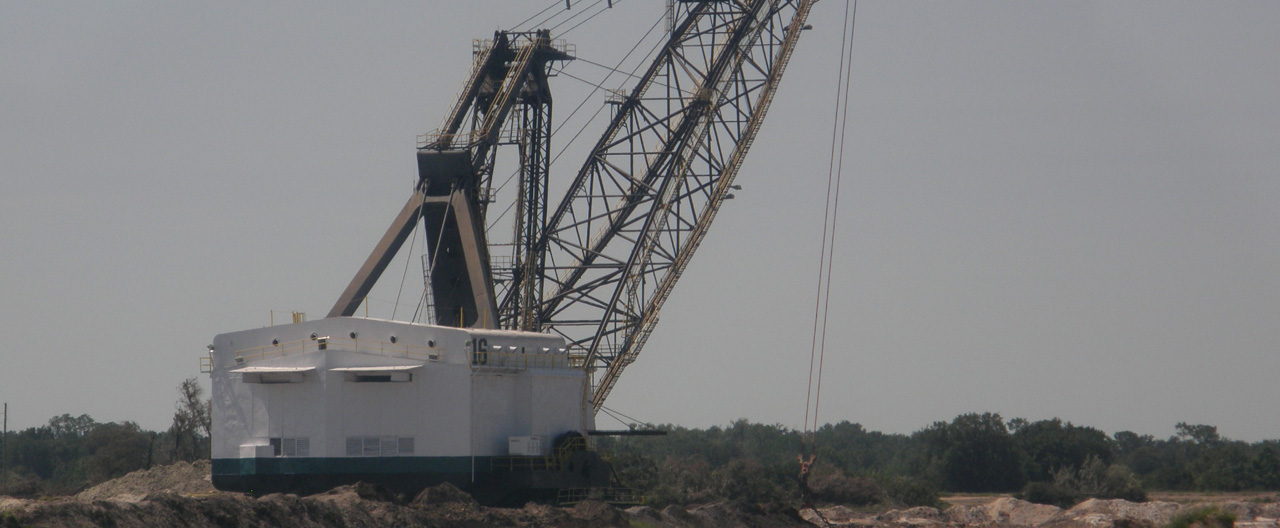Timeline of Phosphate Communities
There were 400 mining companies in Florida in 1895. The number dropped to 81 in 1900 and about 30 in 1911, 17 of which were in central Florida. In the beginning, companies were mostly small and the mining was done by hand. These companies were later consolidated and sold to larger companies. By the late 1930s only three companies were left mining in the hard rock district of Florida around Marion county and six were operating in the pebble district of central Florida.
Following is a list of primary communities that emerged in the early days of land pebble phosphate mining in central Florida, according to Ray Driver, a Polk County native raised in Mulberry when it was a phosphate town. Ray Driver has written two chronological reports of the history of the phosphate area one of which is titled, “Bone Valley Comes to Life,” which tells the story of life in company towns. There is a complete list of phosphate mines in Appendix B, and a list of Post offices in Appendix C of “Bone Valley Comes to Life.”
Bone Valley – 1893, 1.5 miles NE of Mulberry, Purchased by Prairie Pebble Phosphate in 1902. Moved to Kingsford 1902.
Bradley – 1896, incorporated as Bradley Junction in 1912. Named from Bradley Brothers, important men in phosphate development.
Brewster – 1909, Plant and town ready by 1911. Named from B. H. Brewster, Jr., a major stock holder in Amalgamated Phosphate. Phased out as a community in 1961.
Christina – 1907, founded by C. G. Memminger, who first named it the Medulla Mine, then changed the name to that of his only child, Christina. Became part of Standard Phosphate and was phased out in the early 1930’s.
Coronet – 1906, located three miles SE of Plant City. Began mining as Coronet Phosphate in 1908. C. G. Memminger became President and they also mined at Marylee (Memminger’s wife’s name), Saddle Creek, Hopewell. and Turkey Creek. Phased out in 1955.
Kingsford – 1894, one mile south of Mulberry. Lost its identity in 1903 when the Kingsford mine was purchased by Prairie Pebble Phosphate. Its post office was closed and it sort of merged with Mulberry. The name was changed from Mitchell to Kingsford by Major Lewis MClain.
Mulberry – 1852, became a settlement and became an important area for citrus, cattle, and lumber. The Florida Southern Railroad and the Winston and Bone Valley Railroad crossed near a large Mulberry Tree. Freight was labeled to discharge at the Mulberry Tree. J.J. Purdom of the Plant Railroad constructed a Depot on the location in 1899, and named it Mulberry Station. Mulberry was incorporated as “Town of Mulberry,” but in 1925 it became simply Mulberry.
Nichols – 1905. Nichols was named for a Fort Nichols that was located near the location of the Phosphate Mining Company. C. J. Memminger named Paul Hamilton Fuller as his general manager and charged him to construct a mine and a community. Although a post office is still open, the community was phased out in late 1950.
Pierce – 1906, named by Harry L. Pierce, located four miles south of Mulberry, phased out in late 1950s.
Ridgewood – Founded also by Harry L. Pierce after leaving his first venture into phosphate at Pierce. This new company was called Southern Phosphate Company and was the first to utilize the now necessary dragline. Phased out in early 1960s.
San Gully -1914, was the last community built by a mining company. It was purchased in 1917 by Southern Phosphate and was located where the Oakbridge development is in south Lakeland. It was phased out after WWII began.
